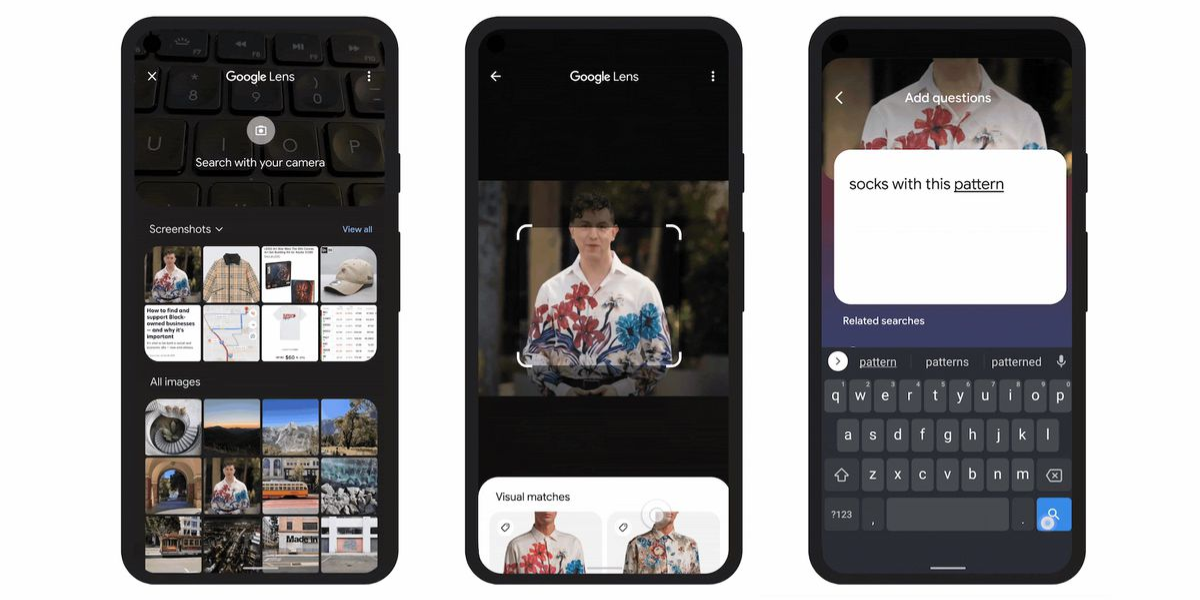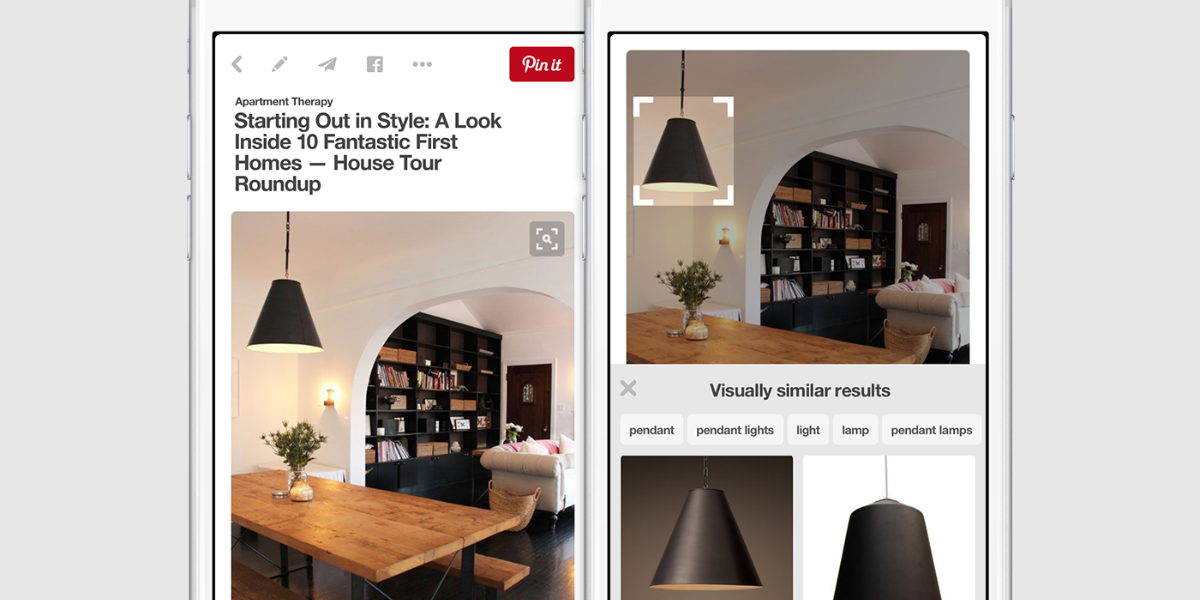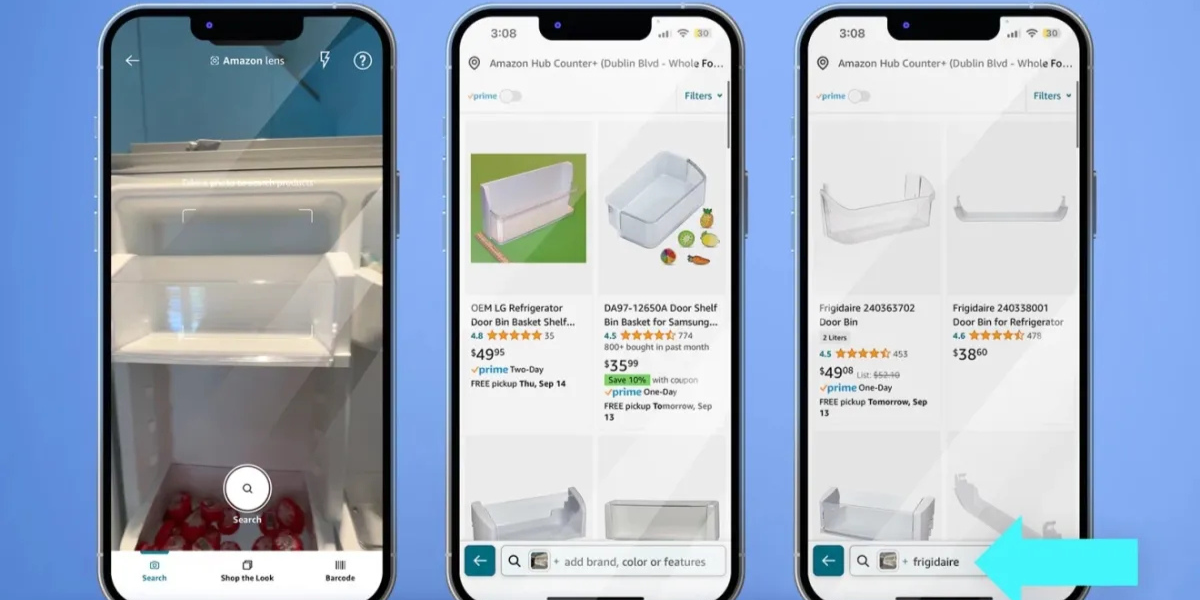Imagine a world where searching for a product is as simple as pointing your phone’s camera at it. Visual search and artificial intelligence (AI) are reshaping how customers find products, eliminating the need for text-based searches. These technologies are paving the way for a seamless shopping experience.
Visual search uses image recognition technology to identify objects in pictures and match them to relevant results. With AI powering this innovation, consumers enjoy tailored results that align with their preferences. Retailers, in turn, can tap into this to optimize their services.
The rise of visual search is significant, especially in e-commerce, where customer experience drives success. Studies show that 62% of millennials prefer visual search over other technologies, demonstrating its relevance in the digital-first market.
Tip: “Keep your product images crisp and clear to make them more recognizable by visual search algorithms.”
Understanding Visual Search and AI

What is Visual Search?
Visual search enables users to upload an image or use a camera to find similar products or information online. Unlike keyword-based searches, it relies on the content of the image to generate results. This eliminates the frustration of using incorrect search terms.
Tip: “Enable visual search in your app or website to capture users who prefer direct image-based shopping experiences.”
Major e-commerce platforms now use visual search tools to connect users with products directly. For example, snapping a photo of a piece of furniture can lead you to retailers selling similar designs. This process streamlines the buyer’s journey and eliminates guesswork.
Talk About Your Marketing Budget With Expert
Role of AI in Visual Search
Artificial intelligence is the backbone of visual search. Machine learning algorithms analyze images by identifying colors, shapes, patterns, and features to match them with a database of products. AI also ensures that search results improve over time by learning from user interactions.
Deep learning, a subset of AI, enables visual search systems to process complex image data. Tools like neural networks mimic human brain functions to understand visual inputs better, resulting in highly accurate search results.
Note: “AI-driven visual search tools adapt to new trends, so updating your product catalog frequently enhances search accuracy.”
Evolution of Visual Search Technology
Visual search has evolved significantly in the last decade. Initially focused on basic object recognition, it now incorporates advanced capabilities like augmented reality (AR) overlays and real-time product suggestions. This evolution reflects how AI advancements propel visual search forward.
For instance, Google Lens allows users to scan QR codes, translate text, and even shop directly through their camera. This level of functionality demonstrates how far the technology has come and hints at its potential to reshape consumer habits.
Tip: “Use AR alongside visual search to create immersive shopping experiences.”
Key Players in Visual Search
Google Lens

Google Lens has become a leader in visual search by offering users a versatile and intuitive tool. It identifies objects and provides contextual information about them, enhancing its usability for consumers.
Recent statistics indicate that Google Lens processes over a billion searches monthly, showcasing its widespread adoption. Businesses that enhance their visibility on Google Lens can boost engagement with their audience.
Note: “Ensure your product images are Google-friendly by using descriptive alt tags and high-quality visuals.”
Pinterest’s Visual Search

Pinterest’s visual search function enables users to find products or designs by selecting parts of an image. It has transformed how individuals seek inspiration for fashion, home decor, and DIY projects, becoming a favorite among creative minds.
This tool has increased engagement rates for brands on Pinterest—businesses showcasing visually appealing content benefit from the platform’s ability to direct customers toward relevant products seamlessly.
Tip: “Post engaging, high-resolution images on Pinterest to maximize the impact of its visual search feature.”

Amazon’s Visual Search Tools

Amazon’s visual search tools help users shop by snapping a picture of a desired product. The tool leverages AI to suggest matches available on Amazon, bridging the gap between in-store and online shopping.
This feature has significantly enhanced Amazon’s ability to meet customer expectations. Reports show that visual search users on Amazon are more likely to complete their purchases than those using text-based searches.
Note: “Leverage Amazon’s visual search by optimizing your product images for lighting, angles, and clarity.”

Impact on Customer Experience

Enhanced Product Discovery
Visual search simplifies how customers find products, removing language barriers or keyword mismatches. Users receive accurate results faster, improving their shopping journey and overall satisfaction.
When customers feel empowered to find what they need quickly, businesses gain their trust and loyalty. This dynamic encourages repeat purchases and builds long-term customer relationships.
Tip: “Highlight unique features of your products in images to stand out in visual search results.”
Personalization and Recommendations
AI-driven visual search goes beyond matching images—it provides personalized suggestions based on browsing history, preferences, and similar items. This level of customization helps customers discover products they might not have considered.
Note: “Integrate recommendation engines with your visual search platform to enhance user satisfaction.”
Personalized recommendations significantly boost conversion rates. Retailers offering tailored options can differentiate themselves from competitors and appeal to a broader audience.
Talk About Your Marketing Budget With Expert
Mobile Shopping Integration
Mobile devices are the primary gateway for visual search users. The integration of visual search with mobile apps allows customers to shop conveniently, making it a critical tool for mobile-first consumers.
Research indicates that over 50% of visual searches are conducted on mobile phones. Retailers optimizing their platforms for mobile use can tap into this growing demographic effectively.
Tip: “Ensure your app is user-friendly and supports high-speed image uploads for smooth mobile shopping experiences.”
Benefits for Retailers and E-commerce Platforms

Increased Conversion Rates
Visual search technology connects customers to the exact product they’re seeking, reducing drop-off rates. Higher accuracy leads to increased conversions and more satisfied customers.
A 2023 study revealed that e-commerce sites using visual search experienced a 30% rise in conversion rates. These insights underscore the importance of embracing this technology for business growth.
Note: “Track your visual search performance metrics to refine your product offerings over time.”
Improved Inventory Management
Visual search data provides valuable insights into consumer preferences. Retailers can analyze which items receive more searches and adjust their inventory accordingly.
This proactive approach reduces overstocking and ensures that customers always find what they need, ultimately boosting profitability and efficiency.
Tip: “Use visual search analytics to align your inventory strategy with customer demand.”
Competitive Advantage
Businesses leveraging visual search gain an edge in a competitive market. By offering a seamless shopping experience, they attract more customers and stand out as innovators in their field.
Adopting visual search early positions retailers as forward-thinking and customer-focused, solidifying their market presence.
Note: “Stay ahead of trends by continuously upgrading your visual search capabilities.”
Challenges and Considerations
Accuracy and Reliability
Ensuring accurate results is a challenge for visual search technologies, especially with complex images. Misidentifications can frustrate users and harm their trust in the platform.
To address this, businesses must invest in high-quality datasets and continuously train their AI models. This commitment ensures reliability and enhances the overall user experience.
Tip: “Regularly test your visual search tool to identify and fix errors promptly.”
Privacy Concerns
As visual search collects image data, concerns about privacy and data security arise. Retailers must prioritize safeguarding user information to build trust.
Transparency about data usage and compliance with regulations like GDPR can alleviate these concerns, making customers feel safer while using the platform.
Note: “Adopt secure practices and inform users about how their data is handled to maintain trust.”
Integration with Existing Systems
Incorporating visual search into existing platforms can be complex, requiring significant time and resources. Seamless integration demands compatibility with various databases and systems.
Collaboration with experienced AI developers can streamline this process and minimize potential disruptions during implementation.
Tip: “Start with pilot programs to test visual search features before full-scale integration.”
Future Trends in Visual Search and AI
Advancements in AI and Machine Learning

AI advancements will continue to enhance visual search by improving speed, accuracy, and adaptability. Emerging technologies like generative AI could revolutionize how images are interpreted.
These developments will unlock new possibilities, such as predicting trends based on image data and enabling more interactive search experiences.
Note: “Stay informed about AI trends to ensure your business benefits from the latest innovations.”
Expansion Across Industries
While retail leads in visual search adoption, other industries are exploring its potential. Healthcare, for example, uses it for disease diagnosis through medical images, while education incorporates it for interactive learning.
These cross-industry applications highlight the versatility and future significance of visual search technology.
Tip: “Explore new use cases for visual search within your industry to stay innovative.”
User Adoption and Behavior
As visual search becomes mainstream, consumer behavior will adapt. Users will increasingly rely on visual tools, demanding faster and more accurate results.
Businesses that prioritize user education and experience will lead this transition, reaping the benefits of widespread visual search adoption.
Note: “Educate your audience about using visual search tools effectively to maximize their value.”
How SpreadMe Digital Revolutionizes Marketing with Visual Search and AI

At SpreadMe Digital, we embrace cutting-edge technologies like visual search and AI to give your brand a competitive edge. Imagine a potential customer snapping a photo of your product and being instantly directed to your website—that’s the power of visual search. Our team ensures your product catalog is optimized for tools like Google Visual Search and AI-driven platforms. Hence, your business remains accessible and relevant in the ever-evolving digital space.
We implement solutions, and we tailor strategies that connect you with your audience in smarter ways. From enhancing product discoverability to personalizing recommendations, we focus on driving engagement and boosting conversions. With SpreadMe Digital, you’re always ahead of the curve.
Conclusion
Visual search, powered by AI, is transforming the way customers find products by bridging the gap between online and offline shopping. Its ability to deliver quick, personalized results enhances user satisfaction and drives business success.
Retailers embracing visual search today position themselves for a future defined by convenience and innovation. As the technology evolves, its potential to reshape customer experiences and business strategies will only grow.
Let’s make your business the first thing customers see! Contact us today to explore how visual search and AI can transform your marketing strategy.




